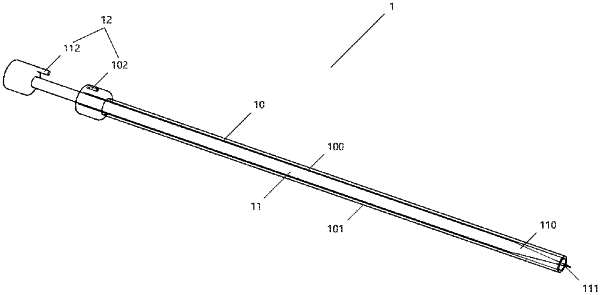| CPC A61B 17/3468 (2013.01) [A61N 1/0534 (2013.01)] | 20 Claims |

|
1. An auxiliary implantation assembly for a flexible neural electrode, wherein the auxiliary implantation assembly comprises:
a cannula having a longitudinal cavity, and a tube wall at a distal end of the cannula is configured to form a contact area larger than a first threshold to realize the pressing and limiting against the distal part in a case where the cannula is fixed and contacts a distal part of the flexible neural electrode; and
a traction member extending in the longitudinal direction, a distal end of which is formed with a traction part and is configured to form a first physical connection mechanism with a proximal end of the cannula, the first physical connection mechanism is switchable between a locked state and an unlocked state by means of a proximal operation of the traction member relative to the cannula,
wherein, in the locked state, the traction part penetrates out of the distal end of the cannula, and the penetrated traction part is configured to form a second physical connection mechanism with the distal part of the flexible neural electrode, so as to guide the flexible neural electrode in implantation,
in the unlocked state, the traction member is movable in the longitudinal direction along the cavity of the cannula,
the second physical connection mechanism is configured to separate in a case where a proximal force is applied to the traction member,
wherein the traction member is further configured to switch the first physical connection mechanism to the unlocked state and retract proximally in the longitudinal direction along the cavity of the cannula in a case where a layout part of an electrode site of the flexible neural electrode is implanted to a target site, and
the cannula is further configured to press and limit against the distal part via the contact between the tube wall at the distal end and the distal part, in a process of the traction member retracting proximally relative to the target site; then withdraw away from the target site in the longitudinal direction after the traction member is completely withdrawn from the target site.
|